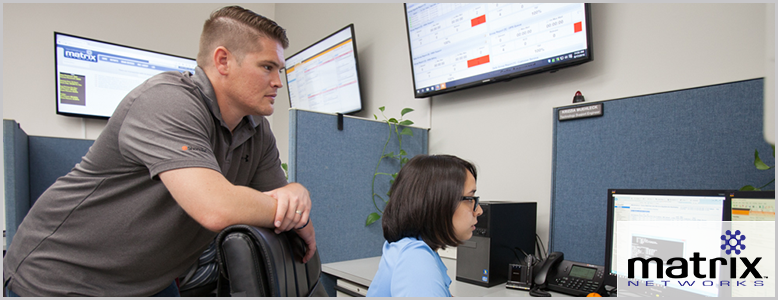
A lot of thought needs to go into your call flow configuration to ensure a smooth process for your clients as well as making sure the calls get to the right person within your organization. With this article I will focus mainly on the best practices for setting up your Workgroups.
If you haven't read the blog that explains the difference between ShoreTel hunt groups and Workgroups, I suggest you read it first to understand the differences between the two. If you have read my article, you are probably here because you want to know how to use your Workgroups!
When creating Workgroups you have to answer these questions:
- How do you want customer calls to distribute?
- Who are the users answering the calls?
- If the workgroup is unavailable, where do you want calls to go?
Best Practices: ShoreTel Workgroups
Distribution:
With Workgroups, ShoreTel has multiple ways to distribute the calls to your users. ShoreTel has the following call distribution patterns:
- Round Robin – Sends the incoming call to the next agent in the ordered list. For example, this will best be used for a support center as this is the way to best equally distribute the calls.
- Top Down – Rings the agents in the order that they are listed in the Workgroup. Many companies use this feature so they can put their best agents for the queue first. For example, a Spanish speaking agent group would want to put their best Spanish speakers first. A downside to using this distribution pattern is that the same agents will get majority of the calls, and calls will not be distributed equally.
- Simultaneous – All of the extensions in the Workgroup will ring at the same time. Agents will only receive one call at a time. A limitation to using simultaneous ring is that there can only be a max number of 16 agents in the Workgroup.
- Longest Idle – When you have the distribution pattern set to Longest Idle, the system will present the incoming call to the agent who has been idle longest. Doing this will help equally distribute the calls to the agents. One thing to keep in mind, if an agent gets an internal call or even checks their voicemail, the system will reset their timer, and it will present the call to the next agent.
Tech Tip: If you’re running a queue on the Workgroup then you will probably be using the Longest Idle method so calls will be distributed equally.
Agent Designation:
Deciding what users would be best for a Workgroup situation is determined by what department is taking calls. If you are designing call flow for a group of receptionists, then a Workgroup isn't the best option because they will only be able to handle one call at a time. The majority of the businesses that use Workgroups design them for a support team or a group of agents who do not need to take multiple calls at once and also need to have queue functionality. Workgroups give you those "call center" features without the huge overhead prices. With a Workgroup, you can also include a single shared voicemail box so all users can manage the voicemail messages of the whole Workgroup.
When using Workgroups, you gain many more advantages than you do with just a regular hunt group. The administrator will be able to program specific schedules for the Workgroup, so that queues can be set to distinguish between on-hours, off-hours, and even holidays. Doing this, the system will automatically change how the Workgroup acts based on the time of day. One of the main functions of a Workgroup is the ability to have a queue. With a queue, you can set it so that if all agents are currently on the phone, then callers will go into a queue that has hold music and prompts to leave a message. The system even has the ability to announce the estimated wait time that the caller has until they will be able to speak to an agent. Workgroups also give you the ability to have queues through the ShoreTel client software. This will show you how many calls are in queue and how long callers have been waiting. This is a great way to watch and see if you need to have more agents join the queue.
Workgroups function at a basic level without any supplemental licensing. With additional licenses, your agents have the ability to login/logout at will. This is a great setup for a support center where agents need to have the ability to log out for lunch and the calls will still be answered by their colleagues without unnecessary delay. On the other side, if your team likes the way that workgroups distribute calls, but don’t need the login/logout features then you are able to log in all the agents through Director. Doing this will allow you to provide your callers with the queue like features, but not have to pay for the additional licensing.
With the ShoreTel system, you are also able to run reports on the Workgroup and gain stats. The metrics that you can see and report on include: how many calls come into the group, the number of calls an agent has taken, the number of abandon calls by queue. This will give you, as an administrator, more of an idea what is needed from your system as well as help with staffing.
Finally, let's talk about something that no one wants to think about – what happens if the Workgroup goes down?
Workgroups live on the ShoreTel HQ servers. Because of this, you always need to have a backup plan in case of a failure. Let's say the worst happens, and your server goes offline. Your calls will still need to get routed. Matrix Networks recommends having your Workgroup backup destination be a hunt group with a select few people. In this way you at least have a simplified failsafe if needed. Your Workgroup agents will automatically be part of the hunt group that invisibly supports the Workgroup.
As you can see, it's no small thing to design and implement Workgroup queues, but with a little bit of preparation and planning, you can leverage this powerful option in service to your business needs. Take the time to answer the three main questions – distribution, agent designation, and failover destination – and you will be ahead of the game.
Next Article: 3 Keys to a Successful ShoreTel Install
Author: Daniel Haggard



.svg%20(1).png?width=55&name=1200px-Logo_of_YouTube_(2015-2017).svg%20(1).png)

